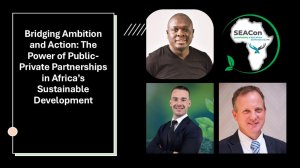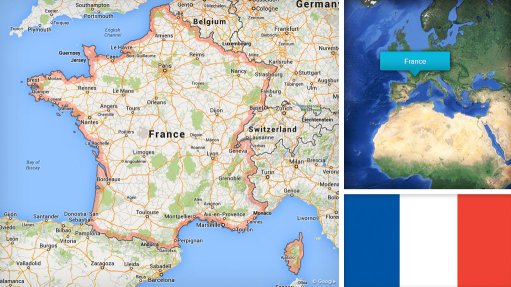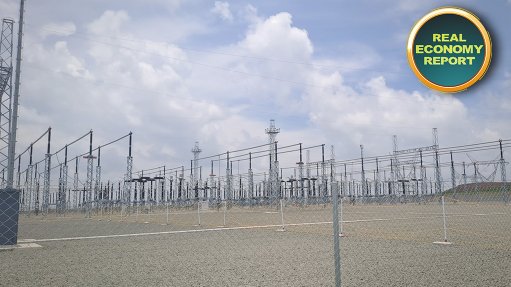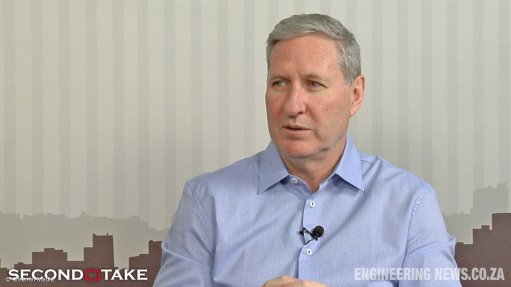The role of public-private partnerships in Africa’s sustainable development

The key theme of public-private partnerships emerging as a critical mechanism for advancing Africa’s infrastructure and sustainability agenda is unpacked in a SEACon Africa webinar
Public-private partnerships (PPPs) are emerging as a critical mechanism for advancing Africa’s infrastructure and sustainability agenda, but questions persist around how to structure them for long-term success. This was the key theme of a recent webinar titled The Power of Public-Private Partnerships in Africa’s Sustainable Development, moderated by Sustainability and ESG Africa Conference and Expo co-founder and director Wendy Poulton.
The discussion brought together Accent Leadership Group founder and CEO Gilbert Ang’ana, NEPAD Business Foundation CEO Peter Varndell, and S&P Global Sustinable1 senior client engagement specialist Warrick Fuchsloch, who each highlighted both the promise and the pitfalls of PPPs on the continent.
Ang’ana emphasised that while African countries have articulated strong national development goals aligned with the African Union’s Agenda 2063, translating these ambitions into action has proved challenging. “Most of the countries actually have on paper the national development goals that highlight the ambition. But what has been lacking has been the actual actions towards the realisation of these visions,” he said.
He noted that financing gaps remain a primary obstacle. For example, Africa accounts for more than 20% of the global population but produces only 2% of the world’s clean energy. In infrastructure alone, the yearly investment gap is estimated at $204-billion, which is eroding GDP growth by up to 2% a year.
The Role of PPPs
Varndell described PPPs as an “opportunity to bring in private sector expertise and capital, just to really close that gap in terms of how we can develop, finance, execute and operate infrastructure requirements”. He stressed that well-prepared projects, rather than funding availability, are often the constraint. “The rhetoric has always been that there’s not enough money. That’s been proved to be wrong. What we don’t have are enough well-prepared projects,” he argued.
Fuchsloch agreed, noting that early-stage feasibility and risk-sharing mechanisms are key to attracting investment. “It’s right to have policy in place, but having specific avenues very clearly laid out on how existing private sector projects can be enhanced with partnership is crucial,” he said.
The speakers agreed that technical feasibility is only part of the equation. Ang’ana warned that “soft elements” such as trust, behaviour and inclusivity are often overlooked, yet can make or break a partnership. “If you have parties that are not authentic from the start in terms of involvement and contribution, you’re starting a partnership with a gap,” he said, adding that local communities must feel empowered and included to ensure sustainability.
Fuchsloch highlighted the importance of ongoing transparency, citing practices from the mining sector. “In mining it is common practice to declare resources and reserves in detailed technical reports before projects are initiated. We need similar technical due diligence and regular public reporting in PPPs to build buy-in and trust,” he explained.
Varndell supported this view, underscoring the need for authenticity. “Partners want to see that there’s a genuine project and a genuine opportunity. Unless you see that, you’re not going to get people to participate,” he said.
Balancing Public and Private Objectives
A recurring challenge in PPPs is aligning government priorities for social and economic upliftment with investors’ need for returns. Varndell noted that acknowledging these differing objectives upfront is vital: “You need to acknowledge that investors are looking for commercial returns, but build into that the way you can achieve the outcomes for broader social outputs.”
Fuchsloch added that differing priorities can be complementary rather than contradictory: “The government brings stability, regulation and policy, while the private sector brings capacity, technical expertise and funding. Aligning those is beneficial to both parties.”
The panel pointed to innovative financing mechanisms as essential for managing risks. Ang’ana cited the Azura-Edo power project in Nigeria and Uganda’s Bujagali hydropower project as examples where partial risk guarantees, political risk insurance and blended finance models have been critical to securing private investment.
Varndell, however, cautioned that structuring remains complex, particularly in cross-border projects. “Often people default to setting up perfect institutional structures before doing the work. More should be done upfront before you create institutions to house them,” he said.
Skills and Leadership
Capacity and leadership were highlighted as recurring gaps in African PPPs. Varndell called for stronger project sponsors who can shepherd initiatives from feasibility through to execution. Ang’ana emphasised the need for “responsible negotiation skills” and “collaborative leadership”, warning that many projects fail because of poor stakeholder engagement and weak governance.
“Compared with successful PPPs in Africa, there are many more that have been unsuccessful because of a gap in collaborative leadership skills,” he said.
Asked what is needed to scale up PPPs across the continent, the panellists pointed to project selection, bankability, and celebrating existing success stories. Varndell stressed that early-stage project screening is essential to avoid wasting resources on unviable ventures. Ang’ana argued that credible business cases and responsible risk sharing are vital to attract capital. Fuchsloch called for greater visibility of past successes to inspire replication: “Start championing success more. With that championing also comes credibility for organisations that have achieved results.”
The discussion underscored that PPPs can play a transformative role in addressing Africa’s infrastructure, energy, water and agricultural challenges—but only if trust, transparency and strong leadership are at the core. As Poulton concluded, “If we don’t get collaboration and co-creation right, we are never going to have the social upliftment and economic development that we need from public-private partnerships.”
Article Enquiry
Email Article
Save Article
Feedback
To advertise email advertising@creamermedia.co.za or click here
Comments
Press Office
Announcements
What's On
Subscribe to improve your user experience...
Option 1 (equivalent of R125 a month):
Receive a weekly copy of Creamer Media's Engineering News & Mining Weekly magazine
(print copy for those in South Africa and e-magazine for those outside of South Africa)
Receive daily email newsletters
Access to full search results
Access archive of magazine back copies
Access to Projects in Progress
Access to ONE Research Report of your choice in PDF format
Option 2 (equivalent of R375 a month):
All benefits from Option 1
PLUS
Access to Creamer Media's Research Channel Africa for ALL Research Reports, in PDF format, on various industrial and mining sectors
including Electricity; Water; Energy Transition; Hydrogen; Roads, Rail and Ports; Coal; Gold; Platinum; Battery Metals; etc.
Already a subscriber?
Forgotten your password?
Receive weekly copy of Creamer Media's Engineering News & Mining Weekly magazine (print copy for those in South Africa and e-magazine for those outside of South Africa)
➕
Recieve daily email newsletters
➕
Access to full search results
➕
Access archive of magazine back copies
➕
Access to Projects in Progress
➕
Access to ONE Research Report of your choice in PDF format
RESEARCH CHANNEL AFRICA
R4500 (equivalent of R375 a month)
SUBSCRIBEAll benefits from Option 1
➕
Access to Creamer Media's Research Channel Africa for ALL Research Reports on various industrial and mining sectors, in PDF format, including on:
Electricity
➕
Water
➕
Energy Transition
➕
Hydrogen
➕
Roads, Rail and Ports
➕
Coal
➕
Gold
➕
Platinum
➕
Battery Metals
➕
etc.
Receive all benefits from Option 1 or Option 2 delivered to numerous people at your company
➕
Multiple User names and Passwords for simultaneous log-ins
➕
Intranet integration access to all in your organisation


















